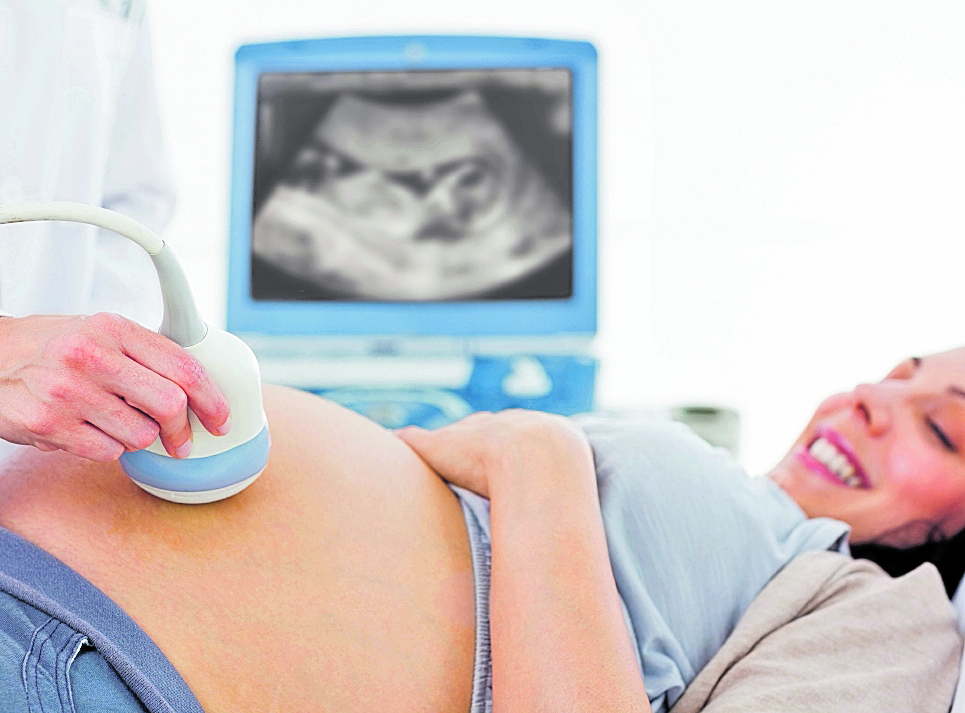Problems achieving pregnancy are becoming more and more common, with 1 in 7 couples suffering from infertility. Thanks to scientific advances, innovative assisted reproduction methods now exist to enable more people to fulfill their dream of becoming mothers and fathers.
For many couples, having children is one of their life plans. However, when that much-desired baby does not arrive, sadness, frustration, anger, and problems at home begin. Although talking about infertility still causes fear because it is considered an unknown subject, more and more people are undergoing assisted reproduction treatments.
“15% of couples of reproductive age suffer from fertility problems. That is, one in seven couples is infertile. A woman’s reproductive age is between 18 and 35 years, and men’s between 18 and 50,” says Luis Pedro Rossal, a doctor specializing in assisted reproduction.
Infertility is defined as a situation in which a couple fails to conceive after 12 months of unprotected sexual intercourse. The time is relative and will depend on the health of each couple, since women who have a gynecological pathology, such as polycystic ovary syndrome or menstrual disorders, among others, or who are over 35 years old, will have a harder time getting pregnant. It is also the case when the man has a health problem, for which the time changes to 6 months.
Additionally, in some cases, women may be able to get pregnant but not be able to sustain the pregnancy.
To better understand infertility, it is important to remember that pregnancy is the result of a process that has many steps.
- A woman’s body must release an egg from one of her ovaries (ovulation).
- The egg travels through one of the fallopian tubes toward the uterus (womb).
- Along the way, a man’s sperm must join (fertilize) the egg.
- The fertilized egg must attach to the uterus (implantation).
Therefore, infertility occurs when there is a problem in any of these processes.
Is it a problem specific to women?
How infertility is treated has evolved. In the past, it was considered a taboo subject, but in 2010 the World Health Organization declared it a disease. In addition, the subject was previously referred to as “management of infertile women,” but as research has progressed, specialists have valued the importance of the male in the investigation, so today we talk about “management of infertile couples.”
According to Rossal, 40% of the causes of infertility are of female origin, 40% of male origin, and 20% are combined.
Most cases of infertility in women are related to problems with ovulation. This means that there are no eggs to fertilize. Problems with menstrual irregularities or not having a menstrual cycle are symptoms that the person is not ovulating normally.

Ovulation problems can be a consequence of polycystic ovary syndrome, which consists of a hormonal imbalance that interferes with normal ovulation and is one of the most common causes of infertility. It can also be caused by premature ovarian failure, which occurs when the ovaries stop functioning normally before the age of 40. It is important to clarify that this disease is not the same as menopause, according to Juan Francisco Solares, a gynecologist.
Menstrual cycle disorders, such as oligomenorrhea, when menstruation occurs at intervals of 36 to 90 days, or amenorrhea, which occurs when women miss at least three menstrual periods, are causes of infertility. Also obstruction of the fallopian tubes by endometriosis, inflammatory and infectious diseases in the pelvis, and uterine fibroids, which are noncancerous masses of tissue and muscle located in the walls of the uterus.
The male factor is evaluated through a spermogram analysis, which assesses seminal volume, sperm concentration per milliliter, percentages of sperm motility, normal sperm shapes, and live sperm. It can also be assessed if there are signs of infection. “The exam guides us to what is wrong and we must pay attention to it to achieve pregnancy. To achieve this, we rely on a urologist,” says Rossal.
Among the most common causes of infertility in men is varicocele, a problem that occurs when the veins in the testicles are too large, which affects the quantity and shape of sperm. In addition, other factors cause low sperm production, such as testicular injuries, testicular cancer, or contracting mumps after adolescence, and not following the corresponding treatment can cause problems in sperm production.
Risk factors
Many factors can affect both men’s and women’s health and ability to have a baby, including excessive alcohol consumption, drug use, smoking, high levels of stress, sexually transmitted diseases, and cancer treatments. In women, being overweight or underweight, or having health problems that cause hormonal changes, can affect the ability to get pregnant.
An important risk factor, especially in women, is age, since as time passes, the quantity and quality of eggs decline, to the point where they could influence the health of the embryos. “Few women know that at birth they have between one million and two million eggs and that as they get older this number decreases. It is estimated that, by the age of 37, a woman only has approximately 25 thousand eggs left to produce,” explains Rossal.
Therefore, men and women need to maintain a healthy lifestyle, which involves eating well and exercising, to be in a better condition to achieve pregnancy. Women must also take care of themselves to not only achieve pregnancy, but to complete it, and thus achieve the goal of having a baby. Both women must go to regular medical check-ups to monitor their health and, if a problem arises, treat it in time.
What are the treatments for infertility?
The most common and everyday treatments for infertility are those of low complexity. That is, fertilization occurs in the fallopian tube, as a physiological cycle, through ovulation stimulation processes so that sexual relations at home generate pregnancy naturally.
The level of complexity can also be raised and, through treatments, the ovary can be made to produce follicles and the ovulation process can be controlled, to have programmed intercourse or to control it so that couples have relations at times that coincide opportunely with ovulation.

Artificial insemination, considered to be of low complexity, consists of stimulating the ovaries to provoke the development of follicles, and instead of the couple having sexual relations, the man gives a sperm sample in the laboratory so that the specialist can place an intrauterine seminal sample, previously prepared in the laboratory.
“Seventy percent of infertility cases, if the woman consults before the age of 35, could be resolved using these treatments,” says Rossal. After this age, the number of follicles decreases and the quality of the eggs declines, which is why the use of highly complex treatments is recommended. Their name is because fertilization occurs in the laboratory.
One of the treatments is in vitro fertilization, which consists of several eggs recovered from the ovaries being placed in a culture medium with sperm to be fertilized in a controlled environment outside the human body. The fertilized eggs are placed in the woman’s uterus to await successful implantation and the development of pregnancy. ICSI treatments consist of injecting a sperm into the cytoplasm of the egg.
The choice of one or in vitro fertilization method will depend on the quantity and quality of the eggs, as well as the condition of the semen on the day the procedure is performed in the laboratory.
“The innovative aspect at the moment is the timing of the culture. When these treatments began, they were done in the fallopian tube, then the embryos were placed on day two. After 2000, embryo transfers were done on day three, which increased the chances of pregnancy. In 2013, protocols began to be put in place to transfer embryos on day five. Doing it in the most advanced period possible is what every laboratory wants, but it will depend a lot on the conditions of the place,” says Rossal.
The latest development is the genetic diagnosis of the embryo. When you have a highly developed embryo, you can take 5 cells and perform a genetic diagnosis to determine which embryo is chromosomally healthy and would have the greatest possibility of achieving pregnancy.
Infertility and Covid-19
Many couples have suspended their fertility treatments or postponed their diagnostic appointments due to Covid-19. However, experts say that by taking into account the factors that can positively or negatively impact an infertility treatment, they could consult their specialist about whether they can continue.
Because this pandemic will continue for an indefinite time and, taking into account that infertility is a disease and reproductive medicine is an essential service, clinics have decided to restart their fertility activities and treatments, maintaining extremely close surveillance and taking strict measures to reduce risks for their patients and staff, such as:
- Before starting a high or low-complexity treatment, the couple must undergo an RT-PCR test that helps determine if the patients have the virus.
- Temperature taking before entering the facilities.
- Adequate disinfection of footwear on mats upon entering the clinic.
- Strict use of face masks and antibacterial gel throughout the visit to the Clinic.
- Application of questionnaires to confirm that patients have not been in contact with people with the virus.
- Maintain the recommended social distancing by reducing the volume of patients and spacing out consultations appropriately.






















+ There are no comments
Add yours